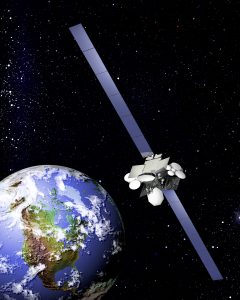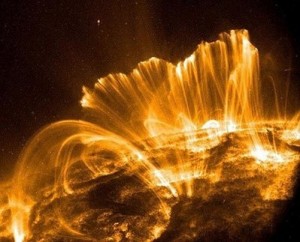At the beginning of February, the UK Royal Academy of Engineering released a report assessing the impact a solar superstorm would have on the United Kingdom. What scientists have in mind when talking about a solar superstorm is an event similar in strength and size to the infamous 1859 Carrington event. This, so far the most intense geomagnetic storm measured, was caused by a powerful solar flare or coronal mass ejection that hit the Earth’s magnetosphere and resulted in major disruptions of telegraph services in Europe and North America.
Whereas minor solar storms occur on a regular basis, superstorms are rather rare. But as this week’s surprising meteor impact in Russia has shown, even a low probability event should not be dismissed. When it comes to solar superstorms, as stated in the British report, “The general consensus is that a solar superstorm is inevitable, a matter not of ‘if’ but ‘when?’” The widely embraced view in the community presumes that such a Carrington-like superstorm will occur within the next 250 years with the probability of 95% and within the next 50 years with the probability of 50%. Obviously, the recommended attitude is better safe than sorry.
It is clearly not only the UK who can find recommendations outlined in the report worth considering. So let’s have a look inside. What can we expect to happen and what prevention measures could help mitigate the consequences?
Power Grid
The functionality of the power grid should be the number one concern as the civilization of the 21st century is truly electricity dependent. With some grid transformers running the risk of being damaged so severely that it would take weeks to repair them, the importance of back up infrastructure is crucial. In that regard, the UK seems to be in a good position.
Satellites

Satellites in orbit are in the front line and would be under fire of charged particles during a solar superstorm (Credits: Boeing).
Even though only 10 percent of the global satellite fleet in orbit is expected to experience temporary outages, the GPS and other global navigation and positioning constellations might be out of order for up to three days. Such a scenario would inevitably affect other sectors: the banking and communication industries rely on exact timing through GPS, shipping and aviation would have to switch to ground based navigation and still they would experience problems. Satellite operators would probably calculate the losses in the long term as the radiation load would bring many satellites to the end of their operational life time at a faster rate.
Aviation
As the ability to forecast such events in a timely fashion are rather limited, most of the travelling aircraft would be taken by surprise. Passengers on aircraft caught in a magnetic storm would experience radiation doses that are far above the annual safe limit for the general public, which can increase the risk of developing cancer.
Despite the fact that aviation technology is designed to mitigate failures of components, the avionic risk is expected to be 1,200 times higher than under usual circumstances.
As HF communication, which is the major tool for long distance communication in aircraft, would most probably be disrupted, pilots would have to follow procedures to ensure safety if communication with ground centers is lost. No doubt it would increase the workload of the pilots of such flights and further contribute to higher risk of accident. In such a situation, planes readying for takeoff would be grounded.
Communication
In contrast, for example, to the US, the UK cell phone communication network seems rather resilient to the effects of solar superstorms. In general, cellular networks that rely solely on Global Navigation Systems for timing would be in trouble.
Long distance mobile communication through satellites would most probably be disrupted or offer limited services. Such an outage would probably last between 1 and 3 days.
What Shall We Do?
There’s no need to panic, of course. Focus on systematic space weather forecasting as well as investments into back up infrastructure and implementation of less vulnerable technologies are recommended, though. The lower the number of sectors paralyzed when the critical scenario occurs, the lower the economical impact on society will be.
From the beginning of the space age, no major superstorm has occurred yet, therefore researchers have only limited data to estimate reliably what the actual impacts would be. And it is good to remember that the 95% probability in the next 250 years can, in fact, mean next year or even tomorrow.
In a following video you can see a Fox News story about a 2013 solar storms prediction:
[youtube http://www.youtube.com/watch?v=yCq_nktzXcA]















































![A trajectory analysis that used a computational fluid dynamics approach to determine the likely position and velocity histories of the foam (Credits: NASA Ref [1] p61).](http://www.spacesafetymagazine.com/wp-content/uploads/2014/05/fluid-dynamics-trajectory-analysis-50x50.jpg)



Leave a Reply